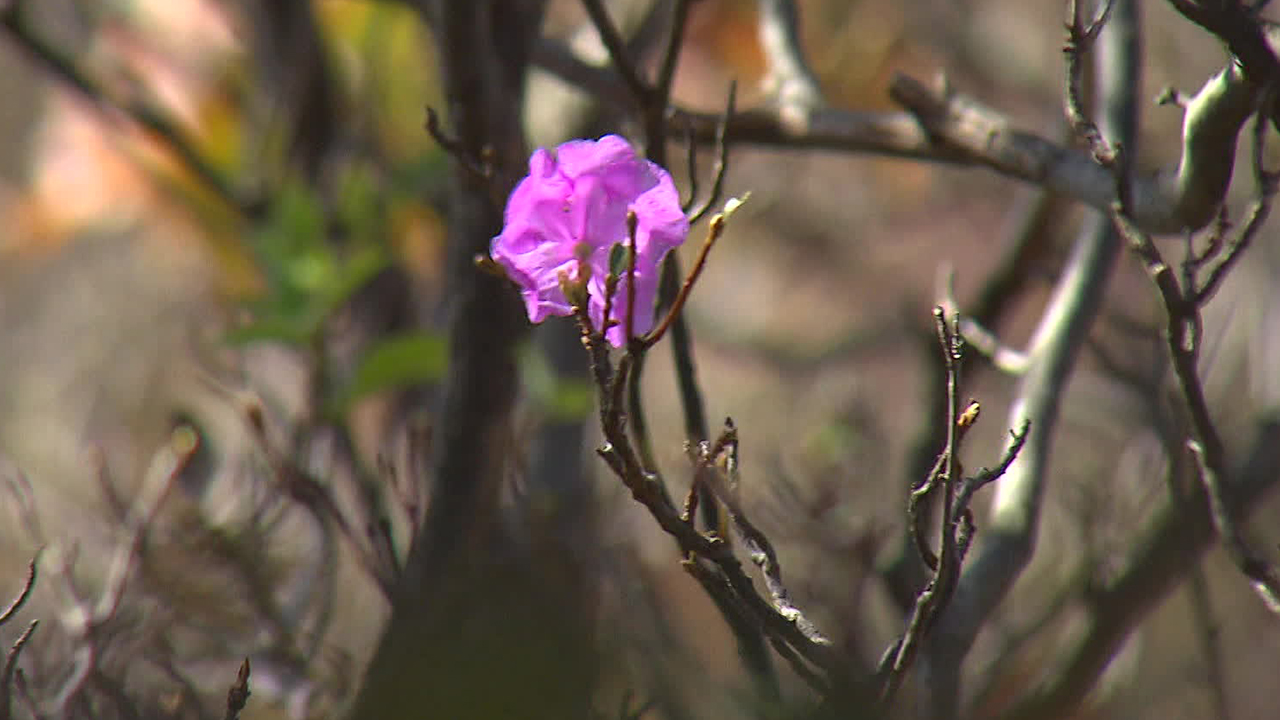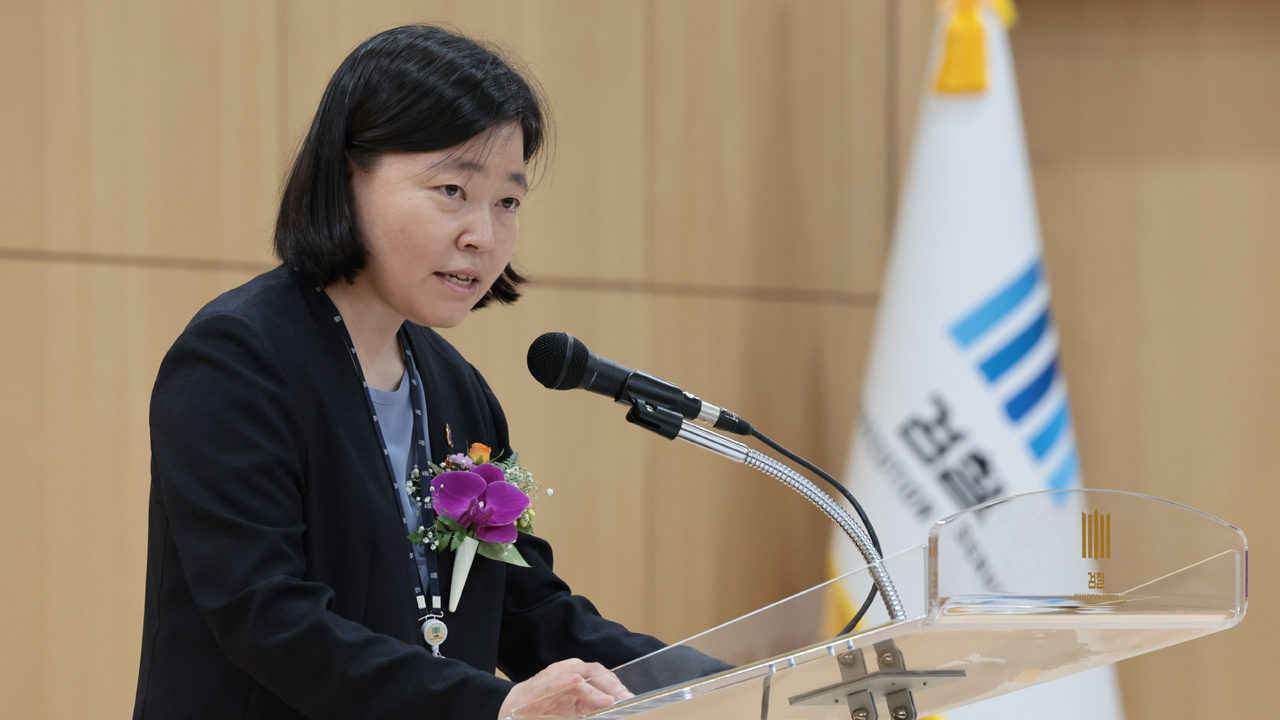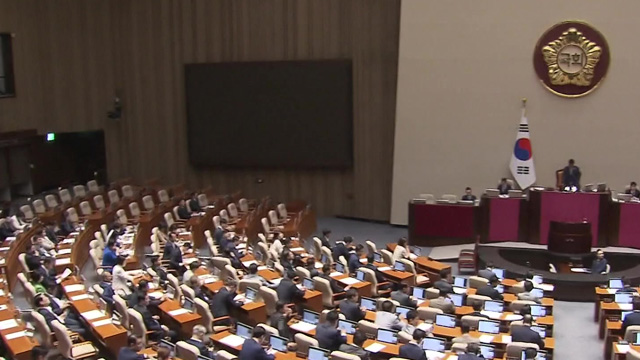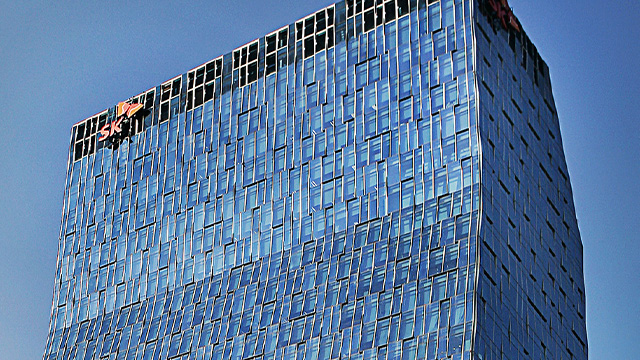Unusual azalea blooming in Seoraksan signals climate change impact
입력 2024.10.17 (23:59)
읽어주기 기능은 크롬기반의
브라우저에서만 사용하실 수 있습니다.
[Anchor]
In Seoraksan, where the autumn leaves are turning vibrant colors, unexpected azaleas have bloomed.
This unusual phenomenon of both autumn leaves and azaleas coexisting has been observed due to an unprecedented high-temperature event.
The ecosystem is being threatened as autumn becomes increasingly shorter.
Reporter Jeong Myeong-gu has the story.
[Report]
At an altitude of about 1,000 meters, this is Hangeoryeong in Seoraksan National Park.
The representative spring flower, the azalea, has unexpectedly burst into light pink buds.
Azaleas, which typically bloom around April, are experiencing "abnormal flowering" in the autumn.
A strange scene unfolds as spring flowers defy the seasons and blend with the autumn foliage.
[Kim Young-hee/Researcher, Gangwon Forest Research Institute: "The fruits have dried up and fallen off early before maturing, and flowers that bloom in spring are blooming again in autumn...."]
Since last week, azaleas have started blooming again, with three locations observed in Hangeoryeong alone.
Due to blooming twice a year, it is expected that the number of flowers blooming next spring will decrease, negatively impacting growth.
The unusual high temperatures are cited as the cause, with Gangwon Province recording an average temperature of 22.2 degrees Celsius in September, marking the hottest month on record.
Such "anomalies" appearing in our forests are expected to intensify due to climate change and other factors.
The increasingly shorter autumn also threatens native plants.
Over the past decade, the average length of autumn in South Korea has been 64 days, about ten days shorter than it was 100 years ago.
[Kwon Bo-ram/Researcher, Gangwon Forest Research Institute: "As autumn shortens, there is insufficient time to prepare for efficient nutrient use, which threatens the next growth or survival."]
This year in Seoraksan, the azalea fruits are also falling early while still unripe, signaling warnings for the ecosystem.
This is Jeong Myeong-gu from KBS News.
In Seoraksan, where the autumn leaves are turning vibrant colors, unexpected azaleas have bloomed.
This unusual phenomenon of both autumn leaves and azaleas coexisting has been observed due to an unprecedented high-temperature event.
The ecosystem is being threatened as autumn becomes increasingly shorter.
Reporter Jeong Myeong-gu has the story.
[Report]
At an altitude of about 1,000 meters, this is Hangeoryeong in Seoraksan National Park.
The representative spring flower, the azalea, has unexpectedly burst into light pink buds.
Azaleas, which typically bloom around April, are experiencing "abnormal flowering" in the autumn.
A strange scene unfolds as spring flowers defy the seasons and blend with the autumn foliage.
[Kim Young-hee/Researcher, Gangwon Forest Research Institute: "The fruits have dried up and fallen off early before maturing, and flowers that bloom in spring are blooming again in autumn...."]
Since last week, azaleas have started blooming again, with three locations observed in Hangeoryeong alone.
Due to blooming twice a year, it is expected that the number of flowers blooming next spring will decrease, negatively impacting growth.
The unusual high temperatures are cited as the cause, with Gangwon Province recording an average temperature of 22.2 degrees Celsius in September, marking the hottest month on record.
Such "anomalies" appearing in our forests are expected to intensify due to climate change and other factors.
The increasingly shorter autumn also threatens native plants.
Over the past decade, the average length of autumn in South Korea has been 64 days, about ten days shorter than it was 100 years ago.
[Kwon Bo-ram/Researcher, Gangwon Forest Research Institute: "As autumn shortens, there is insufficient time to prepare for efficient nutrient use, which threatens the next growth or survival."]
This year in Seoraksan, the azalea fruits are also falling early while still unripe, signaling warnings for the ecosystem.
This is Jeong Myeong-gu from KBS News.
■ 제보하기
▷ 카카오톡 : 'KBS제보' 검색, 채널 추가
▷ 전화 : 02-781-1234, 4444
▷ 이메일 : kbs1234@kbs.co.kr
▷ 유튜브, 네이버, 카카오에서도 KBS뉴스를 구독해주세요!
- Unusual azalea blooming in Seoraksan signals climate change impact
-
- 입력 2024-10-17 23:59:22

[Anchor]
In Seoraksan, where the autumn leaves are turning vibrant colors, unexpected azaleas have bloomed.
This unusual phenomenon of both autumn leaves and azaleas coexisting has been observed due to an unprecedented high-temperature event.
The ecosystem is being threatened as autumn becomes increasingly shorter.
Reporter Jeong Myeong-gu has the story.
[Report]
At an altitude of about 1,000 meters, this is Hangeoryeong in Seoraksan National Park.
The representative spring flower, the azalea, has unexpectedly burst into light pink buds.
Azaleas, which typically bloom around April, are experiencing "abnormal flowering" in the autumn.
A strange scene unfolds as spring flowers defy the seasons and blend with the autumn foliage.
[Kim Young-hee/Researcher, Gangwon Forest Research Institute: "The fruits have dried up and fallen off early before maturing, and flowers that bloom in spring are blooming again in autumn...."]
Since last week, azaleas have started blooming again, with three locations observed in Hangeoryeong alone.
Due to blooming twice a year, it is expected that the number of flowers blooming next spring will decrease, negatively impacting growth.
The unusual high temperatures are cited as the cause, with Gangwon Province recording an average temperature of 22.2 degrees Celsius in September, marking the hottest month on record.
Such "anomalies" appearing in our forests are expected to intensify due to climate change and other factors.
The increasingly shorter autumn also threatens native plants.
Over the past decade, the average length of autumn in South Korea has been 64 days, about ten days shorter than it was 100 years ago.
[Kwon Bo-ram/Researcher, Gangwon Forest Research Institute: "As autumn shortens, there is insufficient time to prepare for efficient nutrient use, which threatens the next growth or survival."]
This year in Seoraksan, the azalea fruits are also falling early while still unripe, signaling warnings for the ecosystem.
This is Jeong Myeong-gu from KBS News.
In Seoraksan, where the autumn leaves are turning vibrant colors, unexpected azaleas have bloomed.
This unusual phenomenon of both autumn leaves and azaleas coexisting has been observed due to an unprecedented high-temperature event.
The ecosystem is being threatened as autumn becomes increasingly shorter.
Reporter Jeong Myeong-gu has the story.
[Report]
At an altitude of about 1,000 meters, this is Hangeoryeong in Seoraksan National Park.
The representative spring flower, the azalea, has unexpectedly burst into light pink buds.
Azaleas, which typically bloom around April, are experiencing "abnormal flowering" in the autumn.
A strange scene unfolds as spring flowers defy the seasons and blend with the autumn foliage.
[Kim Young-hee/Researcher, Gangwon Forest Research Institute: "The fruits have dried up and fallen off early before maturing, and flowers that bloom in spring are blooming again in autumn...."]
Since last week, azaleas have started blooming again, with three locations observed in Hangeoryeong alone.
Due to blooming twice a year, it is expected that the number of flowers blooming next spring will decrease, negatively impacting growth.
The unusual high temperatures are cited as the cause, with Gangwon Province recording an average temperature of 22.2 degrees Celsius in September, marking the hottest month on record.
Such "anomalies" appearing in our forests are expected to intensify due to climate change and other factors.
The increasingly shorter autumn also threatens native plants.
Over the past decade, the average length of autumn in South Korea has been 64 days, about ten days shorter than it was 100 years ago.
[Kwon Bo-ram/Researcher, Gangwon Forest Research Institute: "As autumn shortens, there is insufficient time to prepare for efficient nutrient use, which threatens the next growth or survival."]
This year in Seoraksan, the azalea fruits are also falling early while still unripe, signaling warnings for the ecosystem.
This is Jeong Myeong-gu from KBS News.
-
-

정면구 기자 nine@kbs.co.kr
정면구 기자의 기사 모음
-
이 기사가 좋으셨다면
-
좋아요
0
-
응원해요
0
-
후속 원해요
0















이 기사에 대한 의견을 남겨주세요.